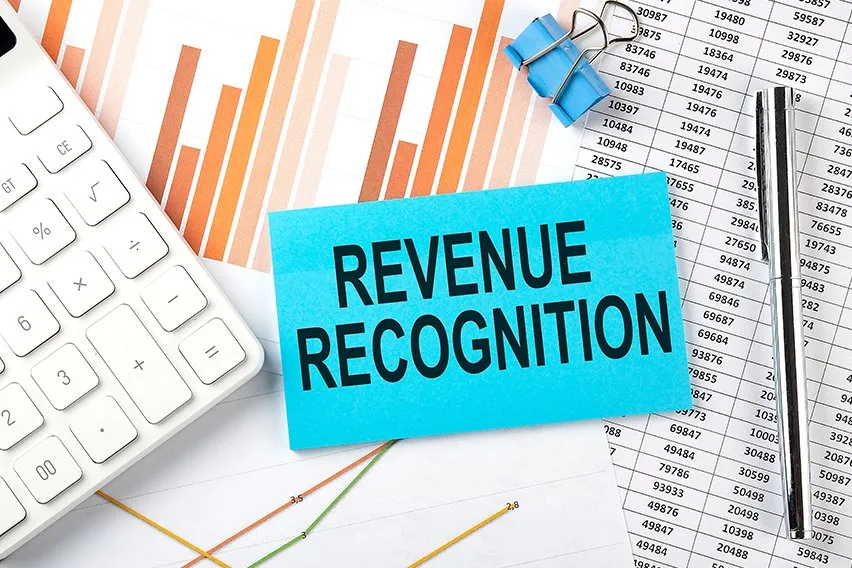How to Write a Business Plan: A Complete Guide

Your business plan is your blueprint for success.
When you’re setting up your new business, one of the most important things to consider is your business plan.
There is a huge amount of work that goes into creating a comprehensive business plan. After all, your business plan is the foundation of information on which your business will be built.
Many business founders find value in taking the time to hone in on their idea and thoroughly research the market that they are hoping to enter. They are also a great way to set long-term goals to grow and sustain your business.
Writing your own business plan can seem like a daunting task. We know that there’s nothing worse than staring at a blank page and hoping for the inspiration.
So that’s why we’ve put together a complete guide on how to write your business plan so that you can get started on creating your dream business.
We’ll take a closer look at what a business plan is and the 10 stages of writing your own comprehensive plan.
Here’s What We’ll Cover:
What Is a Business Plan Used For?
Is a Business Plan Only for New Businesses?
What Is a Business Plan?
A business plan is seen as an essential document that provides an in depth description and overview of your business’s future.
Whilst it’s not strictly necessary to write a business plan, there is a huge amount of value that can be taken from making one. You’ll often find that behind every good business, is an even better business plan.
A business plan should explain your business strategy and your key goals. It should show your path on how you expect to get from where you are now, to where you want to be in the future.

You may also want to use your business plan to answer these critical questions:
- How will you make your business profitable, and how do you plan to expand from there to increase your assets?
- What are your plans for growth within your target market?
- Where do you see your business in one, three and five years from now?
What Is a Business Plan Used For?
At its most basic level, a business plan is used so that you can map out your business and the steps you need to take to realise your idea.
Many business owners actually use their business plans for much more than a simple step-by-step guide. They can also be used to attract investors, talented employees and even potential business partners. Most banks and lenders will also require a detailed business plan in order to greenlight any loans. So having an in-depth plan is vital to support and fund your business.
This is because business plans are an easy way for potential investors to evaluate the feasibility of a business before helping fund it.
Even though this is often the case, some people think a business plan is only useful as a way to secure funding. It can be seen as a pitch full of fantasies and unrealistically high-profit margins.
However, a business plan is as much to do with convincing yourself of your business as it is other people.
No matter what type of business you intend to make, a thorough, well-thought-out business plan is key. It can help you identify and lock down your business strategy and tackle potential problems. It’s also useful to plan out what you’ll need financially and check the viability of your idea.
It’s essentially a way of showcasing your business in a way that shows that you’ve put a lot of consideration into it. It can show that you have identified a gap in the market that you believe you can fill.
Is a Business Plan Only for New Businesses?
A business plan is one of the big steps that you should take when you are starting out in business. But that doesn’t mean that it can only be used at the start.
There is great use in creating a business plan even if you’ve already started your business. They can be used to scale your business and note short-term and long-term goals.
By revisiting and updating your plan regularly, it can become a tool for measuring your success. It can also be used for supporting you in a proposed business expansion.
Therefore business plans are useful no matter how long you have been in business.
How to Write a Business Plan
There is no one-size-fits-all approach to writing a business plan. You can be as creative as you like, as long as you can clearly convey and communicate your message.
However, there is a well-recognised narrative that most business plans tend to follow. As well as a number of common rules that are useful to follow when writing.
Here are the 10 steps that we feel are the most important to follow.
1. Executive Summary
Every business plan should start with an executive summary.
The purpose of the executive summary is to clearly and concisely summarise everything that you’re about to explain in further detail.
A good way to look at the executive summary is as the back cover of a book. If the blurb sounds interesting and hooks the reader, then they are more likely to be enticed into reading the full works.
However, if the summary is too brief or is uninteresting, then the chances are that you won’t want to carry on reading.
This is why the executive summary is such a key part of your business plan.
While it should be detailed and interesting, you also don’t want to write more than a page. At the end of the day you’re writing the summary – not the whole plan.
The perfect summary is short, snappy and leaves the reader wanting to know more.
2. Company Description
This is certainly a case of being exactly what it says on the tin. The company description section is where you describe your company.
Who are you? What makes you different from the rest? What are your goals?
This is an introduction to you, your business, and why you’re in the field you’re in.
Remember that at the early stages of a business, investors will be investing in you as much as they are your idea. If they see someone with a great idea but no passion or drive, then the chances are that they won’t consider you a solid investment.
This is a chance to sell you as well as your business. After all, it is a package deal.
If you aren’t writing a business plan with the aim of gaining an investment, it’s important that you don’t simply skip this stage.
It’s important to have an identity in the business world. It helps to ground you and your business and goes some way towards building your brand. So writing this section out can help your business identity become clearer in your head.
3. Market Analysis
The importance of understanding the market you’re looking to enter cannot be stressed enough.
One of the most common reasons that a new business fails is because the owner neglected to properly research and analyze their market.
For example, a business owner opening a butcher shop in a town may wonder why they aren’t finding success. But a business owner who had done their market research would have seen that this particular town has the highest rate of vegetarians in the country.
Your product needs to match your audience. After all, it’s your target market that will make or break you as a business.
Timing is also a key factor in market analysis. Sometimes you can have everything perfectly in place, but the timing is off and you’re too early or too late to the party.
If you properly analyse your audience and target market, you will be far more likely to spot a gap that you can fill.
If you do this, you’ll be halfway to success.
4. Management and Organisation
As we previously mentioned, the chance of success for a new business is as much about the idea as it is about the people running the business.
This section is a great chance for the reader to see what a fantastic team you have assembled, or have plans to assemble.
If you can show that you’ve got an ensemble of the best and brightest new entrepreneurs in the business then you can give the reader real confidence in what you’re doing.
Make sure that you include the skills sets and the roles and responsibilities of each member. It’s also good practise to communicate how each person involved will contribute to the success of your business.
You may be starting out as a solopreneur and haven’t got a team behind you. In that case, you can use this section to lay out how you plan on managing each of the roles that a business requires. You may also want to show if you have plans on eventually hiring staff once you are settled and can expand.
5. Products and Services
A quick note; if this is the first time you’ve mentioned your products or services, then you should be revisiting your previous sections.
However, this section is the perfect place to go into a lot more depth and details about what you as a business will be providing.
If you plan on having a wide array of merchandise, then don’t feel like you have to go through every single one in fine detail. It’s perfectly fine to give a general overview whilst picking out two or three of what you believe will be your best sellers.
If you are only planning on providing a few products or services, then it’s best to provide as much detail as you feel is necessary. As long as you can comprehensively convey their value and worth.
This is also the perfect opportunity to showcase what makes your products or services unique. Are they handmade? Are they environmentally friendly? Are you providing something that your competitors aren’t?
Key buzz words and phrases like these are guaranteed to catch the attention of the reader.
6. Customer Segmentation
Once you’ve outlined your market, you’ll want to highlight the audience that you’ll be looking to attract. This is because your target market is one of the cornerstones of your business plan.
Customer segmentation is the process of separating your potential customers into different groups. This would be based on their common characteristics. These characteristics can include age, gender, location etc.
This is done so that companies can effectively market to each group appropriately.
Most companies will create an ‘ideal customer’ and create a backstory for them. They will describe where they live, their age, their level of education, how much money they earn among many other details.
This is so that you can make it abundantly clear exactly who you are aiming to sell your products to. And also why you believe they will buy them.
It also allows you to clearly convey that you understand your target market. This is because it would be a huge red flag for the reader if they think that you don’t know or understand who you are trying to sell your products to.
7. Marketing Plan
Now that you’ve made it clear what your market is and who your audience are, it’s time to show the reader how you plan on targeting them with your marketing plan.
This section is used to lay out your proposed marketing strategy. This should include how you intend to promote your business. It also includes what geographical areas you will be targeting, and any key performance indicators that you will be tracking.
When it comes to promoting your business, you should show a detailed outline of how you intend to attract attention and customers.
Many businesses around the world focus a large amount of their marketing on various social media sites. For example Facebook, Instagram or TikTok. So it would make sense to include whether you see these platforms as a viable avenue for your business marketing.
8. Logistics and Operations Plan
This should be a very detailed section of your business plan.
If it’s for investors, this is a key aspect as it shows whether or not your ideas can become a reality.
If you’re writing the plan just for yourself then it’s still important to include this section, but feel free to not include the same level of detail.
This is the section where you will want to outlay who your suppliers will be and what the overall production process is.
So for example, let’s say your business is creating handmade soap. You would need to detail who will be supplying the ingredients for your product and what the process behind creating each bar will be.
This is also where you can show what your facilities are. You can show what equipment you’ll need to succeed, your shipping process, and how you plan on housing your inventory.
It’s a vital section that needs to be as detailed as possible. This is because it will help you to show the reader that you have a solid and intricate understanding of your supply chain.
It’s also important to show that you have a number of contingency plans. This is showing that you can cover for any potential setbacks that may occur over the course of operations.

9. Financial Plan
This is arguably the most important section of your entire business plan.
You may have the best, most unique idea in the world. You may have then written the most detailed, exciting business plan possible. But if your numbers don’t add up, you are doomed to fail.
All other things aside, a business is there to make money.
Running out of funds is one of the most common reasons that small businesses fail. According to a recent study, around 82% of small businesses fail due to poor cash flow management. This also includes a lack of understanding regarding their financials.
This is why it is absolutely essential to show that you have a detailed and realistic understanding of your financial situation.
You’ll want to include three major overviews of your financials. These overviews would be:
You should then be able to provide your financial projections for the next year, five years and ten years.
If you are writing your plan for a potential investor, then this is also the section where you will want to outline your funding request. It is also where you will show how your business will generate enough profit to repay the loan. At the least it should show how you will at least earn a decent return for the investors.
When writing your funding request, it’s important to be as realistic as possible. It doesn’t have to be an exact number either. You can create a range of numbers if you don’t feel comfortable pinpointing an exact number. But it’s best to include a best and worst case scenario.
Essentially, what an investor would like to see is “here is how much I need. And this is the worst case scenario of how long it will take for you to see a return on your investment”.
10. Compile an Appendix
The final stage of your business plan will be assembling a well-organised appendix. This needs to include anything and everything that the reader will need to conduct any due diligence.
This could include things such as:
- Patents and intellectual properties
- Deeds, local permits and legal documents
- Business registries and professional licences
- Industry associations and memberships
- Key customer contracts and purchase orders
Key Takeaways
Around 20% of small businesses fail within their first year of operations. By the end of their fifth year, around 50% will have closed their doors.
There are a number of reasons why this happens. It could be mismanaged finances or targeting the wrong market. It may be a lack of research, or even entering an industry that you don’t have an in-depth knowledge of.
Almost all of these can be solved by starting out with a detailed business plan.
As they say, if you fail to prepare – prepare to fail.
Are you looking for more business advice on everything from starting a new business to new business practices?
Then check out the FreshBooks Resource Hub.
RELATED ARTICLES
 What is Supply Chain Analytics, and Why is it So Important?
What is Supply Chain Analytics, and Why is it So Important? What Is a POS Purchase? A Definitive Guide
What Is a POS Purchase? A Definitive Guide What Is Business Negotiation? Top 10 Successful Tactics
What Is Business Negotiation? Top 10 Successful Tactics Revenue Recognition: Definition, Principles & Example Guide
Revenue Recognition: Definition, Principles & Example Guide Distribution Management: Definition & Advantages
Distribution Management: Definition & Advantages What Is Subscription Billing? 6 Software To Manage Billing
What Is Subscription Billing? 6 Software To Manage Billing